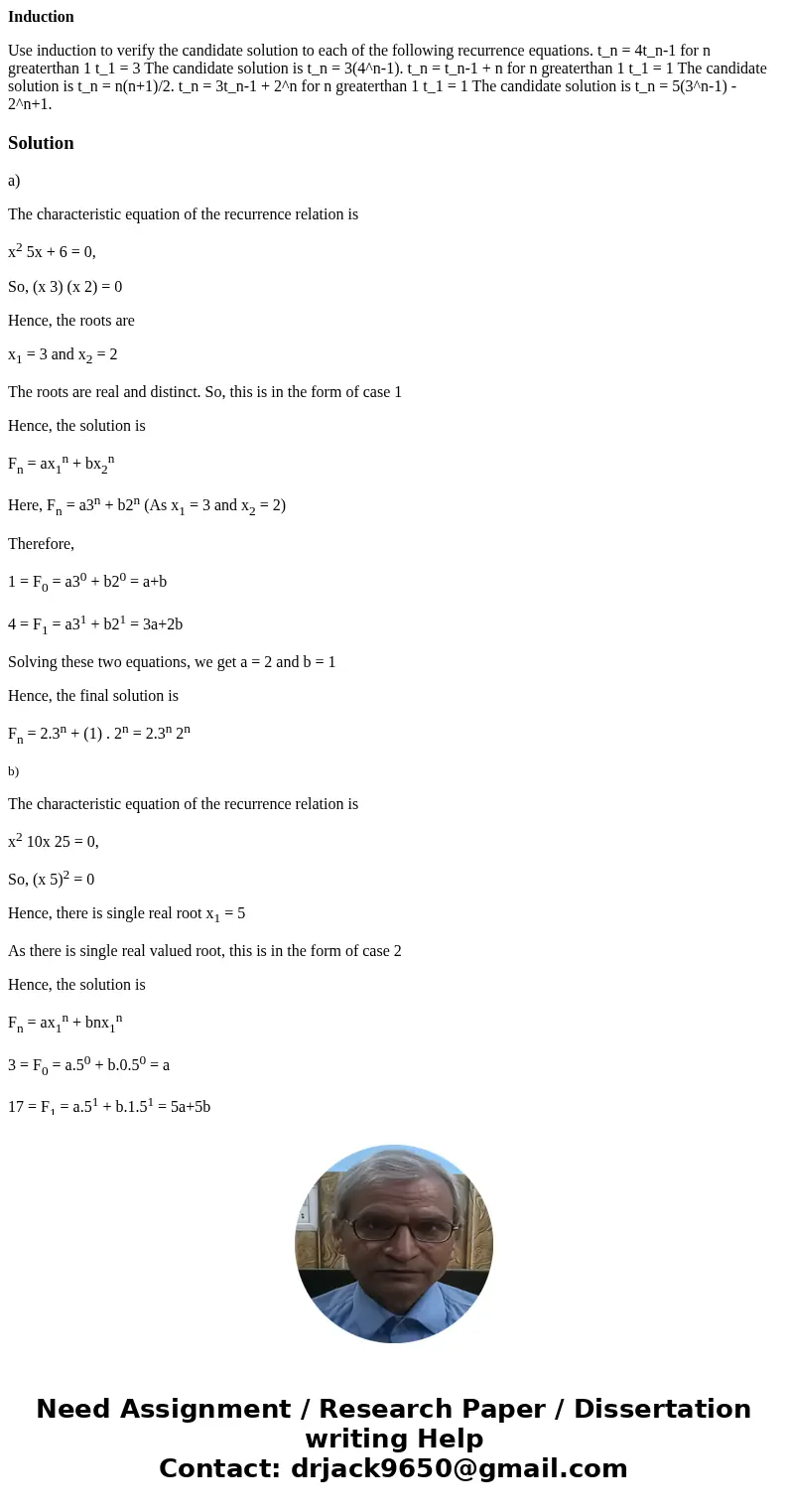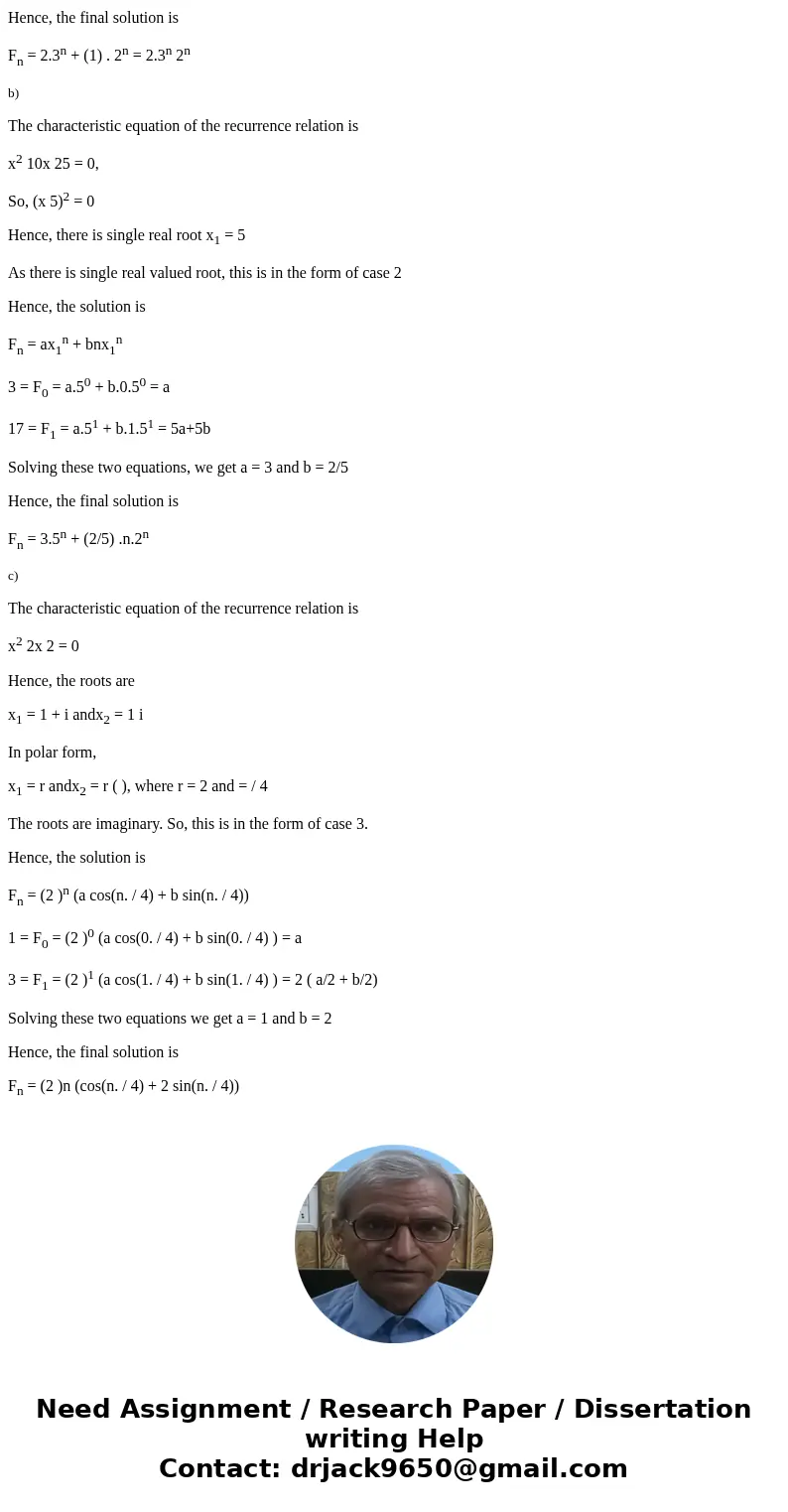Induction Use induction to verify the candidate solution to
Induction
Use induction to verify the candidate solution to each of the following recurrence equations. t_n = 4t_n-1 for n greaterthan 1 t_1 = 3 The candidate solution is t_n = 3(4^n-1). t_n = t_n-1 + n for n greaterthan 1 t_1 = 1 The candidate solution is t_n = n(n+1)/2. t_n = 3t_n-1 + 2^n for n greaterthan 1 t_1 = 1 The candidate solution is t_n = 5(3^n-1) - 2^n+1.Solution
a)
The characteristic equation of the recurrence relation is
x2 5x + 6 = 0,
So, (x 3) (x 2) = 0
Hence, the roots are
x1 = 3 and x2 = 2
The roots are real and distinct. So, this is in the form of case 1
Hence, the solution is
Fn = ax1n + bx2n
Here, Fn = a3n + b2n (As x1 = 3 and x2 = 2)
Therefore,
1 = F0 = a30 + b20 = a+b
4 = F1 = a31 + b21 = 3a+2b
Solving these two equations, we get a = 2 and b = 1
Hence, the final solution is
Fn = 2.3n + (1) . 2n = 2.3n 2n
b)
The characteristic equation of the recurrence relation is
x2 10x 25 = 0,
So, (x 5)2 = 0
Hence, there is single real root x1 = 5
As there is single real valued root, this is in the form of case 2
Hence, the solution is
Fn = ax1n + bnx1n
3 = F0 = a.50 + b.0.50 = a
17 = F1 = a.51 + b.1.51 = 5a+5b
Solving these two equations, we get a = 3 and b = 2/5
Hence, the final solution is
Fn = 3.5n + (2/5) .n.2n
c)
The characteristic equation of the recurrence relation is
x2 2x 2 = 0
Hence, the roots are
x1 = 1 + i andx2 = 1 i
In polar form,
x1 = r andx2 = r ( ), where r = 2 and = / 4
The roots are imaginary. So, this is in the form of case 3.
Hence, the solution is
Fn = (2 )n (a cos(n. / 4) + b sin(n. / 4))
1 = F0 = (2 )0 (a cos(0. / 4) + b sin(0. / 4) ) = a
3 = F1 = (2 )1 (a cos(1. / 4) + b sin(1. / 4) ) = 2 ( a/2 + b/2)
Solving these two equations we get a = 1 and b = 2
Hence, the final solution is
Fn = (2 )n (cos(n. / 4) + 2 sin(n. / 4))


 Homework Sourse
Homework Sourse